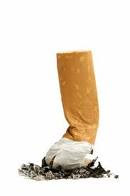Do you or does someone in your family have high blood pressure? If so, you're not alone; according to the recent survey by UN, one in three persons in the all over the globe is in the same situation.
High blood pressure is associated with:
increased risk of cardiovascular disease,
congestive heart failure,
peripheral vascular (blood vessel) disease, and
renal (kidney) insufficiency.
There are no specific symptoms of high blood pressure, so prevention is highly recommended!
One of the most dangerous aspects of high blood pressure (also called hypertension) is that you may not know that you have it! Nearly one-third of people who have hypertension don't know it; however, there are signs of extremely high blood pressure which you should be on look-out for. We will discuss these signs later.
However, for more information on how to reduce the risk of high blood pressure through nutrition, click http://tinyurl.com/PerfectHealthForAll
The Role of Diet in High Blood Pressure
What we eat plays a large role in preventing and treating high blood pressure. According to the National High Blood Pressure Education Program (NHBPEP), the following dietary changes have been proven to help reduce your risk:
1. Maintain a healthy weight.
People who are overweight are two to six times more likely to develop high blood pressure than people who are not. The five-year Primary Prevention of High Blood Pressure Trial showed that a loss of even six pounds was enough to significantly decrease blood pressure.
Start reducing those calories, avoiding sweets and fats, and,
If you are overweight, make losing five to 10 pounds over the next six months a primary goal.
2. Reduce your salt intake.
Even a modest reduction in salt consumption may prove beneficial in lowering your blood pressure. Most of the salt in the average diet does not come from the salt shaker; look to processed and fast foods as the primary culprits. Use more fresh and whole foods, and avoid foods in boxes and cans and fast food as much as you can to lower salt intake.
3. Limit alcohol consumption.
Having three drinks a day is linked to an increase in blood pressure. The NHBPEP estimates that up to 11 percent of all high blood pressure cases may be directly linked to alcohol consumption. Who wants to drink beer anyway if you've already given up the salted peanuts and pretzels?
Possible Dietary Strategies
A host of dietary strategies may be proven to lower blood pressure. Try the above suggestions first, then consider these additional strategies. None will cause harm, and they just might work.
• Increase your potassium intake.
Most fruits and vegetables are high in potassium. A few studies have shown that people with a low potassium intake have a higher risk of high blood pressure. Fruits and vegetables contain plenty of fibre and are important sources of a variety of nutrients and phytochemicals as well, so what have you got to lose?
• Drink more milk.
It appears that increasing calcium intake may help lower blood pressure, especially for people who rarely consume milk. Calcium supplements do NOT appear to reduce risk, so add a glass of milk to your meals and your bones and blood vessels may both thank you.
• Enjoy more of the sea food.
The omega-three fatty acids found in saltwater fish appear to have a role in lowering blood pressure. Fish-oil pills are usually not recommended, especially without a physician's approval, because they may interact with other medications. Choose seafood for dinner two times each week to help keep blood pressure under control.
The DASH Diet
A Dietary Approach to Stop Hypertension has been shown to lower blood pressure and probably will decrease the risk of developing high blood pressure (New England Journal of Medicine, April 17, 1997). To eat the DASH way, follow these guidelines:
Center your meals around carbohydrates such as pasta, rice, legumes and vegetables.
Use meat as part of a meal, not the primary focus.
Enjoy fruit for snacks and desserts.
The DASH plan encourages consumption of more fruits and vegetables than normally recommended; at least eight servings a day are needed for results.
The Bottom Line
What we eat has been proven to lower blood pressure levels, and most likely will also help prevent the onset of high blood pressure. Start a trend for yourself and your children today.
Finally, there is a healthy style you can adopt conveniently that will help you in preventing/controlling any symptoms of high blood pressure. To know more about this new pattern of fighting high blood pressure, click http://tinyurl.com/PerfectHealthForAll
Subscribe to:
Post Comments (Atom)




No comments:
Post a Comment